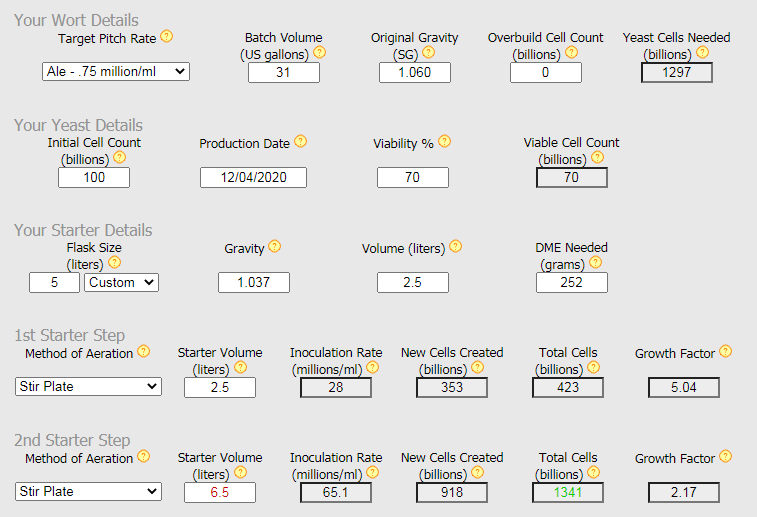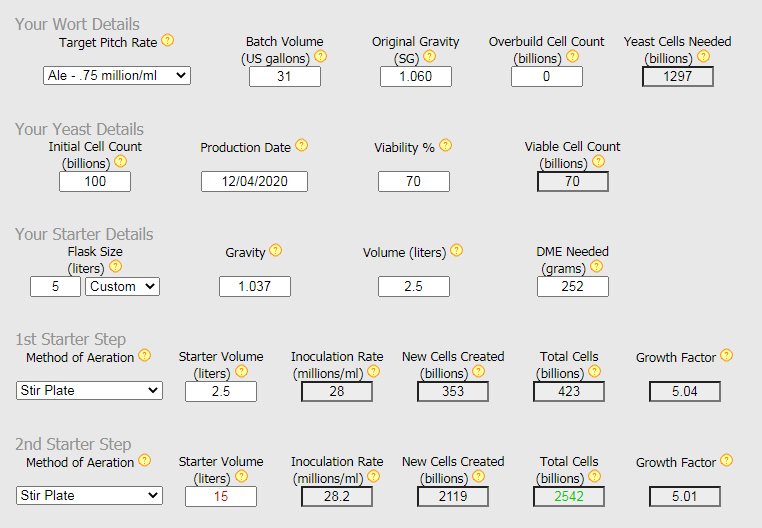So I've never done a step starter before since I always brew 5 to 5.5 gallons . I'm going to be brewing 1 to 2bbl soon. I'm using Brewersfriend yeast calculator. It tells me I need a 3 step starter. I really like that it shows how much DME for each step as well .
I'm guessing I cold crash and decant in between steps to eventually get me 5L. Does that time of cold crashing to decant have a negative affect on the amount of cells? It could be 4 to 5 day old starter.
I'm guessing I cold crash and decant in between steps to eventually get me 5L. Does that time of cold crashing to decant have a negative affect on the amount of cells? It could be 4 to 5 day old starter.




